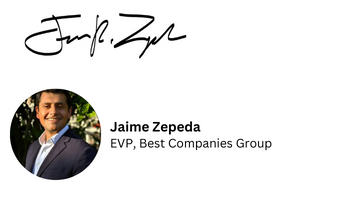Many a man would rather you heard his story than granted his request. – Philip Stanhope
Change isn’t just about what’s changing. It’s about how we react to it, how we handle it, and most importantly, how we feel about it.
When companies announce big, scary changes like layoffs or budget cuts, everyone braces for impact. It’s the kind of news that sends ripples of unease across the office floor. We expect this. It’s part of the deal. Bad news equals unhappy people.
But here’s the twist: what about good news? What about those changes that are supposed to make everyone’s day a bit brighter, like a shiny new benefits package or some fancy tech upgrade? You’d think people would be jumping for joy, but the reality is often more complicated. Change at work is still change.
Here’s where William Bridges comes in with his book “Managing Transitions.” He argues that all change, even the good stuff, can cause a stir. Why? Because it’s not just about the change itself. It’s about what the change represents: the end of the familiar, the beginning of something new. And that can be as scary as a clown in a dark alley.
I’ve seen this play out in real life. Once, our Best Companies Group team was working with a company that revamped their employee benefits after years of complaints. They thought they were heroes, solving a big problem. But when they rolled out the new plan, the reaction wasn’t what they expected. Instead of gratitude, they got confusion and even more complaints. Their employee engagement scores actually dipped in some surprising areas.
As we discussed this together I raised a question for them. Had this conversation around how bad the benefits were ever been raised before the package was improved?
They all looked around and soon realized this issue had never been discussed openly. For year no one talked about the “lousy” benefits (their words, not mine). It was the elephant in the room. By bringing it out into the open, the company didn’t just change the benefits. They changed the conversation. They gave all employees permission to finally air their grievances, and so they did.
It turns out, when you’ve been ignoring a problem for a long time, you can’t just flip a switch and expect everyone to adjust overnight. People need time to process the change, to say goodbye to the old, and to get comfortable with the new. It’s like breaking in a new pair of shoes. At first, they’re stiff and awkward, but give them time, and they’ll fit like a glove.
When this client faced backlash over their new benefits package, they didn’t retreat. They didn’t get defensive. They listened. They acknowledged the frustration and confusion. They opened up a dialogue that should’ve been opened years ago. And that made all the difference.
The next year, things started to look up. The engagement survey showed a big jump in satisfaction. Employees had time to mourn the old ways and to get to know the new ones. They felt heard, they felt respected, and that’s worth its weight in gold.
Remember that change is more than just a set of new policies or procedures. It’s an emotional journey. It’s a test of resilience. It’s an opportunity to grow, to learn, and to come together. Any change at work needs a time to be honor the past.
Whether you’re running a company, leading a team, or just trying to navigate your own personal changes, remember this: the way you handle change can make all the difference. Embrace it, understand it, and most importantly, respect it. Because at the end of the day, it’s not just about what’s changing. It’s about how you adapt, how you evolve, and how you turn that change into an opportunity to be better than before.
Only the Best,


